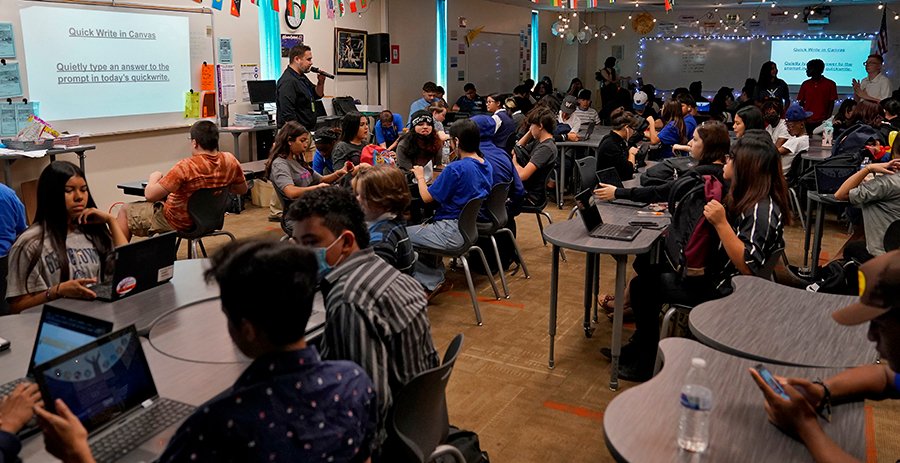ABOR
Teacher Academy Funding Boost: Now Includes Private Universities

Arizona Governor Katie Hobbs has proposed a $15 million one-time allocation to the Arizona Teachers Academy (ATA) as part of her executive budget. However, state Republicans are advocating for a lower allocation of $10 million, insisting that private universities should also benefit from the tuition assistance program.
Representative Matt Gress, R-Scottsdale, emphasized that GOP support hinges on inclusion of private institutions in the program. “We are in favor of funding the Teachers Academy with the proviso that we expand it to private post-secondary education,” Gress stated. He indicated that this inclusion could be crucial for the governor’s proposed funding.
Christian Slater, speaking for the governor’s office, refrained from addressing whether private universities could be added to the ATA funding list. Established in fiscal year 2018, the ATA aims to alleviate staffing shortages in public schools by providing scholarships that require commitment from recipients to teach in Arizona upon graduation.
Currently, the program includes the state’s three major universities, along with Pima Community College, Maricopa Community Colleges, and Central Arizona College. The legislative proposal, House Bill 2018, seeks to allow private universities to access scholarship funds, provided that the amount offered to their students does not exceed average tuition costs at public universities.
For comparison, Grand Canyon University’s base tuition sits around $16,500, while in-state public university tuition ranges from $11,000 to $12,000 for the 2024-25 academic year. Gress acknowledged that the bill is aimed primarily at benefiting Grand Canyon University, which has been a significant contributor to educator training within the state.
GCU’s College of Education Dean, Meredith Critchfield, reported that the university graduated 600 education students last year, with a substantial number remaining in Arizona to teach. The university has received funding from the Arizona Teacher Student Loan Program and is looking to further reduce financial barriers for prospective educators.
The bill comes with its own $10 million appropriation. Meanwhile, the Arizona Board of Regents reported that they currently oversee 3,330 students under the ATA program, an increase from 2,400 students in FY2020. Despite a funding jump to $30 million in FY2024, allocations have stabilized back to around $15 million for FY2025.
ABOR’s vice president for finance strategy explained that funding is primarily designated for students already enrolled in the program, as these scholarships are often vital to students’ continuation through their educational programs. They noted that continuing the current funding level could lead to a decrease in new program entrants by as much as 53% by FY2027.
Several Arizona universities have reported significant waitlists for the ATA program, including ASU with 589 students waiting. Gress anticipates that nearly half of the proposed funding would address these waitlists, allowing private universities to benefit as well.
While the bill has made progress in the legislative process, it has not been without controversy. Democratic representatives have voiced concerns that expanding funding to private universities might divert resources away from public institutions, which have already faced budget cuts totaling $74.5 million in FY2025.
Despite these concerns, Gress argues there is sufficient funding to support both public and private educational needs. He reiterated the urgency of addressing classroom vacancies, asserting that expanding the teacher pipeline is critical for Arizona’s educational system.


















